Background Information and Objectives
-
The game is played by two players (an Attacker and a Defender) using a board of 7 by 7 squares. See Figures 1.1 and 1.2 .
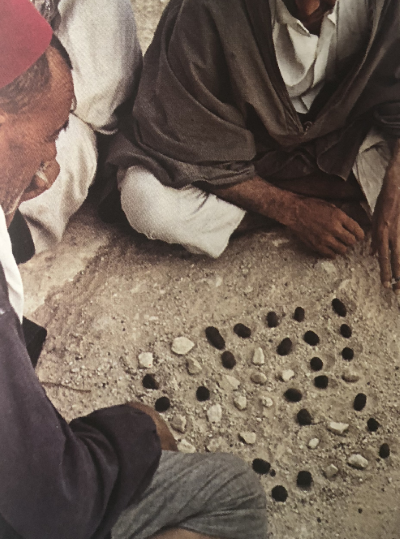
Fig. 1.1 - Kharbga game played in a North African oasis - Each player uses 24 pieces of different colors representing their soldiers. The pieces are also called Faris or Kalb in Tunisian Arabic language.
- The objective of each player is to terminate the opponent soldiers.
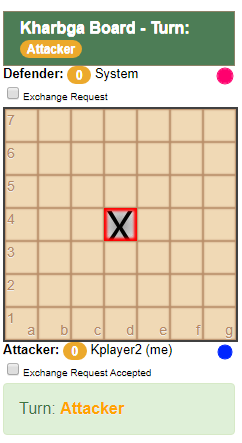
Fig. 1.2 - Kharbga Game Network Board - play online with other network players
- Players decide which one is the Attacker and which one is the Defender. Players switch at the end of the game.
- The Attacker has the advantage of starting setting his first two soldiers on the board in strategic squares to enable capturing the Defender soldiers after the first move.
- The Defender has the advantage of requesting soldier exchanges for unreachable safe soldiers: one Defender soldier for two Attacker soldiers (one for two).
- There are two phases for the game:
Setting soldiers on the board
The following rules are followed when setting the board:
- See Figure 2.1. At this point, the board is empty.

Fig 2.1 - Kharbga Board before setting
- The central square of the board, marked by a cross, is left empty in the setting phase.
- This square is called Malha which means salty in Tunisian Arabic language indicating that it is not seed-able by soldiers.
- This square is used for the first move to open up the game for the moving phase.
- The Attacker has the advantage of starting setting his first two soldiers on the board.
-
Players take turns setting the board two soldiers at a time until the board is filled up. See Figure 2.2.
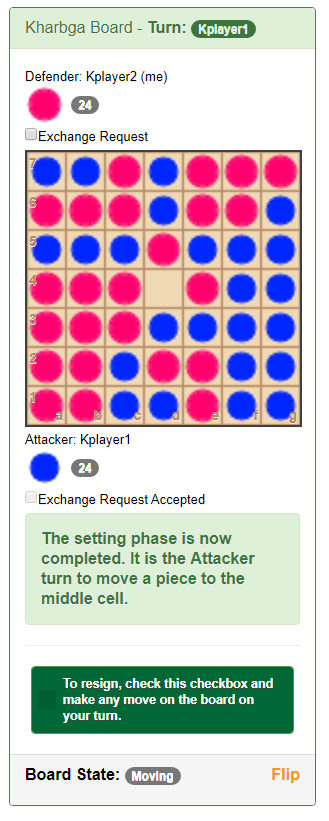
Fig 2.2 - Kharbga Board at the end of setting - All cells are occupied expect the middle cell
- The Attacker's strategy is to setup the opponent soldiers for capture and prevent the defender from building up safe untouchable soldiers.
- The Defender follows the Attacker setting their two places following a strategy to capture the Attacker pieces after making captures.
- The Defender strategy is to build up zones of safety and protected regions in the board where the defenders soldiers become unreachable by the attacker. These soldiers also called untouchables could demand one for two exchanges.
- This phase is very important in the game. Players must follow a strategy to set the opponent soldiers for capture and set their own soldiers for safety.
Moving soldiers - tactics after setting
After completing the setting of the board, players take turns playing following the following rules:
- Soldiers could be used for moving only if they are adjacent to a free/empty cell in the board.
- Moves on the board could be orthogonal in any possible direction (up, down, left, or up) from one cell to another adjacent empty cell.
- Moves could not be made diagonally or off the board.
-
See Figure 3.1. At this point, all board cells are filled up with each player 24 soldiers strategically placed.

Fig 3.1 - setting the board is complete and ready for moving stage
- The first move is always made by the Attacker who must set at least one soldier adjacent to the malha/middle cell.
-
The first move of the Attacker could result in no capture or the capture of up to three of the defender's soldiers. See Figures 3.2 and 3.3.
- The Attacker is using blue soldiers, the defender is using pink soldiers.
- The moved soldier from and to cells are highlighted in yellow.
- The captured soldiers cells are highlighted in red and are moved off the board.
- If the move results in a capture, the same solider must continue moving if a capture is possible. See capturing rules in the next section.
- Players change turns if no more captures are possible by the same soldier used at the beginning of their turn.
- A player turn includes one or more moves by the same solider.
-
If the first attacker turn (with or without capture) results in the Defender being blocked, the Defender wins the game.
- The Defender must be allowed to move after the first Attacker move. See Figure 3.4 for an example of this case.
- After the first move and players change turns, any consecutive moves that result in a player being blocked, the player with free soldiers must continue moving until the opponent player is unblocked.
- The blocked player usually resigns in this case if they see that they do not have any good chance of recovering and freeing their soldiers.
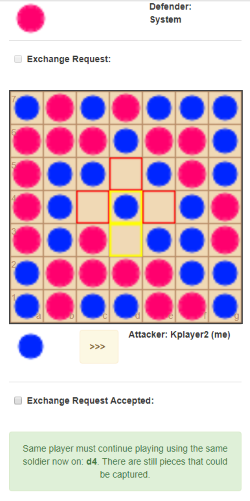
Capturing Soldiers
The following rules are followed:
- A solider is captured if it gets sandwiched (placed between two opponent soldiers) on the move.
-
A capture move may result in the capture of up to three soldiers. See Figure 4.1.
- The Attacker is using blue soldiers, the defender is using pink soldiers.
- The moved soldier from and to cells are highlighted in yellow.
- The captured soldiers cells are highlighted in red and are moved off the board.
- The player score is decremented by the number of captured soldiers.
- The player that made the capture is required to continue moving the same soldier to a next adjacent square if a capture is possible until no further capture moves could be made (using the same initial soldier). See Figures 4.2, 4.3, 4.4 and 4.5.
- If no capture results from the move, players change turns.
-
Soldiers are considered safe in these cases:
- The soldiers moves to a cell between two of the opponent's soldiers or
- if the soldier is already sandwiched in the original setting of the board.
The strategy of the game is not only to capture the opponent soldiers, but also to prevent your own soldiers from being captured. So, sometimes it may be more beneficial to not capture a solider, but move instead to places where to gain ground and prevent being captured or prevent requests for solider exchanges.


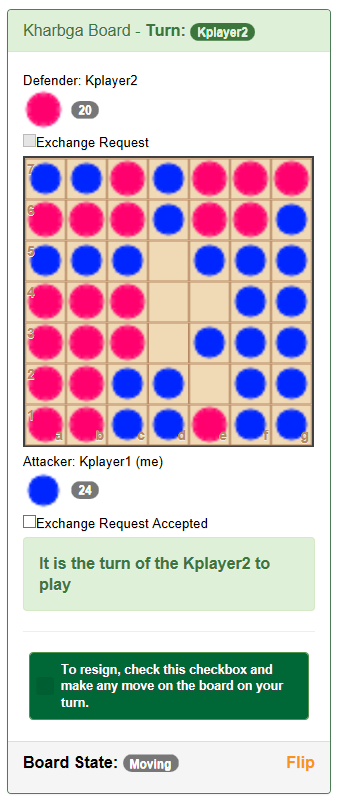
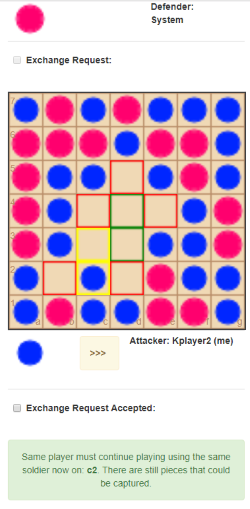
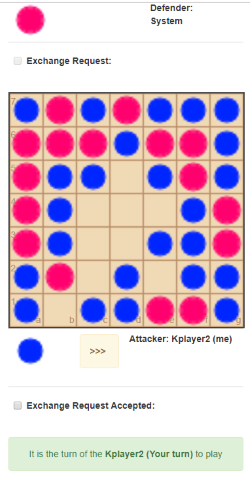
Exchanging Soldiers two for one
Exchanging soldiers is demanded by the Defender who managed to build up protected regions in the board where soldiers could move freely without any risk of capture. These soldiers are called untouchables and demand two of the Attackers soldiers for one untouchable. Below is the procedure/steps for making an exchange:
-
The Defender initiates the request by raising the exchange request flag (checking the Exchange request check box) and moving a safe unreachable soldier to use for the exchange. See Fig. 5.1
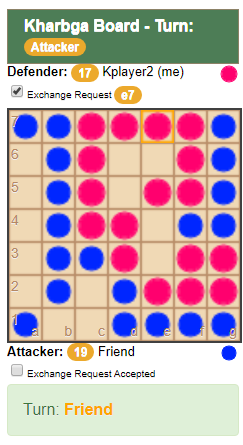
Fig 5.1 - Exchange Request started by Defender - untouchable solider on 'e7' to exchange is shown
-
The Attacker could accept or deny the request in his next move by raising or not raising the Exchange Request Accepted flag. The Attacker accepts the request by raising the Exchange Request Accepted flag and moving a free soldier to use in the exchange.
This would be the first soldier to use in the exchange. See Figure 5.2 below.
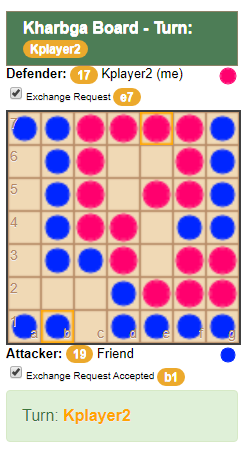
Fig 5.2 - Exchange request accepted by attacker - soldier on b1 is presented
-
The Defender accepts this soldier by continuing to raise the exchange request flag (checking the Exchange request check box) and moving the same safe soldier to an adjacent square. See Figure 5.3 below.
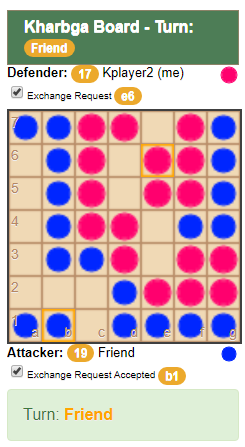
Fig 5.3 - Exchange request confirmed by defender - defender confirmed 'e6' to exchange and accepted attacker 'b1' sacrifice
If a different soldier is used in the move, the process goes back to the first step.
- The Attacker could accept or deny the request in his next move by raising or not raising the Exchange Request Accepted flag and make a move to indicate his second soldier to use for the exchange. See Figure 5.4 below.
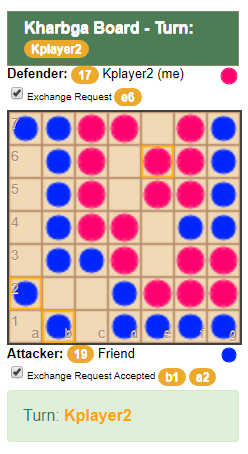
Fig 5.4 - Exchange request accepted by Attacker - second solider on a2 is offered to exchange
-
The Defender accepts this second soldier by continuing to raise the exchange request flag and moving the same soldier to an adjacent soldier. With this step, the exchange request is completed and the exchanged soldiers are removed off the board. See Figure
5 below.
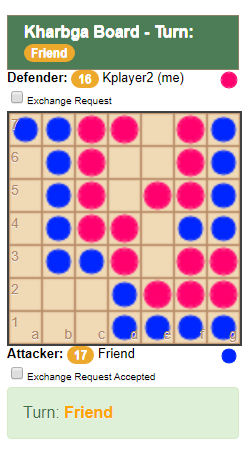
Fig 5.5 - Exchange request completed by defender - both attacker pieces are accepted. All 3 soldiers are removed off the board and scores are adjusted accordingly
After the exchange is completed, it is the Attacker's turn to make the next move.
Game Over
Below are the possible cases when the game is over and a winner is declared
- The Defender is blocked from moving after the first move by the Attacker: Defender wins.
- All the Defender pieces are captured or exchanged - Attacker wins.
- All the Attacker pieces are captured or exchanged - Defender wins.
- The Defender resigns - Attacker wins
- The Attacker resigns - Defender wins